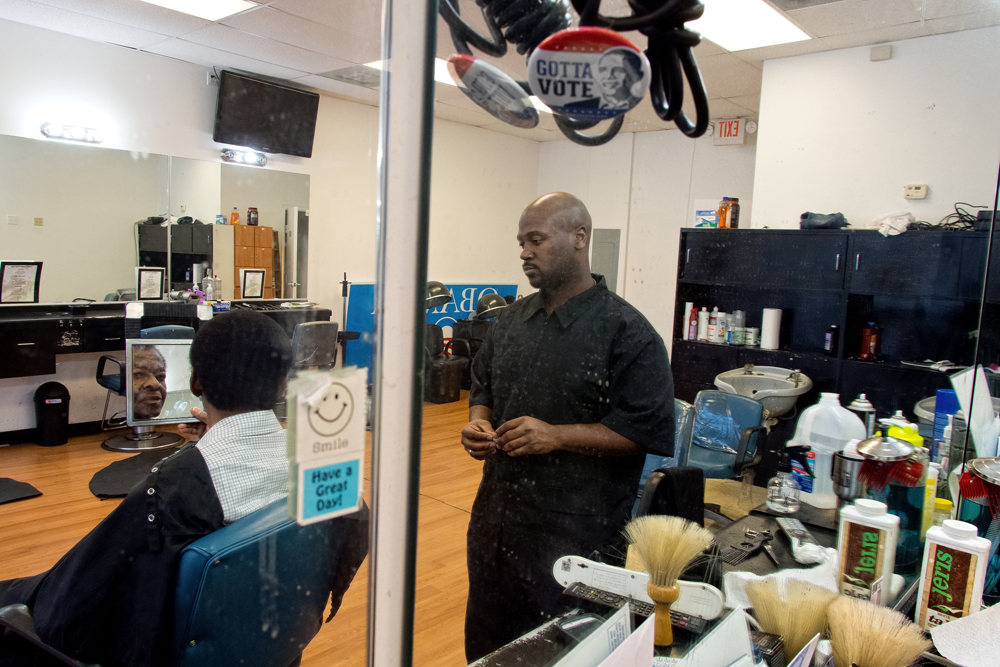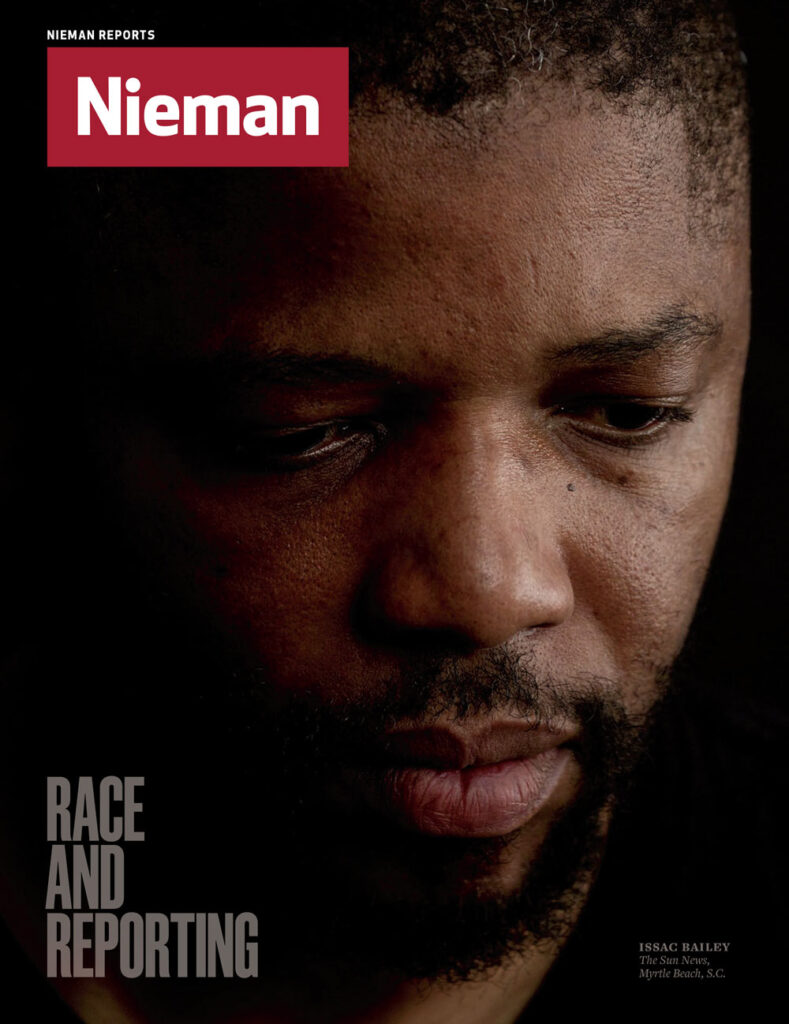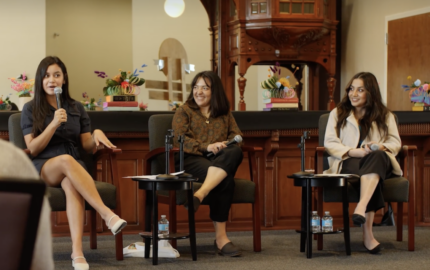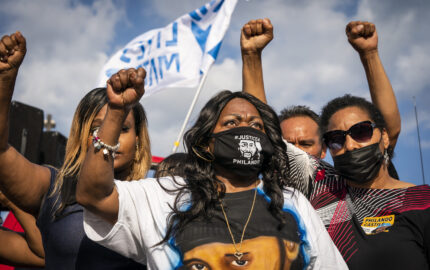When “Tell Me More,” NPR’s talk show about diversity, was canceled in 2014, NPR’s then-ombudsman Edward Schumacher-Matos observed that Latinos (16 percent of the U.S. population) hold only 5 percent of newsroom jobs at NPR and African-Americans (13 percent of the U.S. population) are at 10 percent, down from 12 percent in 2012. About 7 percent of NPR’s newsroom is Asian-American, compared to 5 percent of Americans.
Even if a significant number of minorities work in public radio, you wouldn’t know it—at least, not from their voices. “Public radio voice” is what some people consider accent-less and others know to be a distinct, specific accent: a white one.
If a whitewashed paradigm is getting in the way of efforts to become more diverse—in terms of workforce and sound—what’s to be done? Quite a lot, in fact.
Start Small
“NPR had felt for a long time that our sourcing was leaving people out,” says Keith Woods, NPR’s vice president for diversity in news and operations. So the largest network in public radio launched a three-year content analysis project in 2013 to examine its diversity. In the first year of sampling its flagship programs, “Morning Edition” and “All Things Considered,” Woods’s team found that an overwhelming majority of sources were white males. So NPR began running short experiments within newsroom teams.
On the education team, a project manager reconfirms the group’s goals and tactics for diversifying coverage, doing a weekly check-in about what people are learning as they address those goals, rather than explicitly focusing on the quantity of diverse sources. The newsroom developed a Source of the Week Tumblr as an evolving database of racially and ethnically diverse experts. Woods also advised reporters and editors to contact familiar expert sources and explicitly ask them to recommend colleagues and contacts who could bring more people of color to NPR’s reporting. “It isn’t just about going out and trying to find brown people or women or people from the Midwest,” Wood says. “It’s about changing the way you do things so that those folks naturally make their way into your content as they should.”
Put more of America into your stories
Identify areas in which there already is a diverse pool of sources. And, in areas where diverse “expert sources” are scarce, consider whether a person who is managing the consequences of, say, economic policies—a county health worker rather than someone at Harvard’s School of Public Health—might have valuable expertise. “Education, writing, religion all track closer to the demographics of the country in our race and gender sourcing than do science, economics, politics,” according to Woods. “It doesn’t mean you stop covering the economy; it just means you put more of America into the content, more of the concerns of the average person into the content.” The result: a more accurate representation of race and knowledge in America.
Redefine “expertise”
Consider whether race informs your biases about “expertise,” and share the mic with people who don’t have traditional credentials. At NPR, Woods’s team found that 58 percent of NPR’s go-to sources were either politicians, government officials, journalists, or professors—pools of people whose racial demographics don’t reflect the rest of the country. “If a significant number of your sources are going to be journalists, you have already made a racial decision without making one,” Woods says. “If a significant number of your sources are going to be professors, PhDs in America, you’ve made a gendered and racial decision by that choice, before you ever choose the actual source. If you’re in Washington and you’re talking to a politician, you have made a racial and gendered choice and maybe even a geographic choice, by choosing the category of source.”
Incorporating diverse sources into reporting requires journalists to think differently
In 2012, Localore, a project of the Association of Independents in Radio [where the co-authors work], launched Curious City, an ongoing experiment incubated at Chicago public radio station WBEZ. Curious City has a simple premise: How early and often can you get people into the creation of news stories? Founder and producer Jennifer Brandel broke the creation of news into four steps—pitching, assigning, reporting, and distribution—and turned each one over to what was formerly “the audience.” All of Curious City’s stories answer questions submitted by the public, and it confirms audience appetite by putting questions up for a vote.
The people who pose the questions are invited to help report. The Curious newsroom posts about work in progress to make sure it has the story right, to invite fresh information, and to help people understand the reporting process. Its distribution strategy ranges from broadcast to comic books to community actions, and is always a mix of many media—including, once, infographics on rolls of toilet paper. Curious City subjects range across neighborhoods and economic boundaries. Here are the questions up for a vote last spring: In the Chicago area, do Arab Muslims attend the same mosques as African-American Muslims? How Desi [South Asian] is Devon Avenue these days? Black and Latino poverty seems to be concentrated in certain areas of Chicago. What about poor white neighborhoods?
Ask daring questions
“Why are we allowed to be curious about everything except race?” NPR reporter Shereen Marisol Meraji asked when she launched into “Audio Code Switching: Tackling Race on the Radio” at Third Coast, the largest international conference for audio producers, last November. Meraji is a member of NPR’s Code Switch team, which covers race, ethnicity, and culture; if Code Switch has a secret formula, it’s hiring talented journalists whose approach to very complicated questions is often, “Why is this like that?” The team is full of diverse journalists, but their advantage isn’t that they have a monolithic knowledge of minority culture; it’s that they have excellent reporting skills and their job is to fact-check the prevailing racial narrative. They “run toward stereotypes, with respect,” Meraji says, to stories that explore questions like how the melody from “Kung Fu Fighting” came to signal Asian-ness, or the Old English origins of the “ax” vs. “ask” debate. Code Switch stories ask about cultural signals that no one else has bothered (or, sometimes, dared) to interrogate.
Turn classrooms into newsrooms
In Washington, D.C., the public libraries run a four-part digital audio storytelling workshop. The participants are overwhelmingly African-American, according to library associate and workshop leader Peter Timko, and they work on community and family stories that sometimes feel like an alternate history of the United States. Timko’s approach is purposefully basic: a curriculum that produces an audio story with nothing but a smartphone, free audio editing software, and public domain sound archives.
The Vocalo Storytelling Workshop, based out of Chicago’s WBEZ, teaches citizen journalists (usually people with full-time, non-journalism jobs) to make radio about things that matter to them. The free workshop is small, and applicants are asked how they will give voice to underrepresented communities in the city. The listeners-turned-producers regularly pull stories and sound from perspectives reporters don’t know or can’t access, like Maria Gaspar’s “Cook County Jail: The Visible and Invisible,” in which Gaspar reports on what it means to live in the shadow of one of the country’s busiest jails.
Taken together, initiatives like these result in radio with high-end production values and street-by-street insight, something closer to what President Lyndon Johnson described when he signed the Public Broadcasting Act in 1967: Airwaves “which belong to all the people” are “for the enlightenment of all the people.” Organizations that want to grab opportunities in public media have to experiment along the lines set out in LBJ’s mission, with a particular emphasis on the “all”—voices that sound like, and tell the stories of, every American. And we’ll know we’re done when inclusiveness neither requires, nor feels like, innovation.




